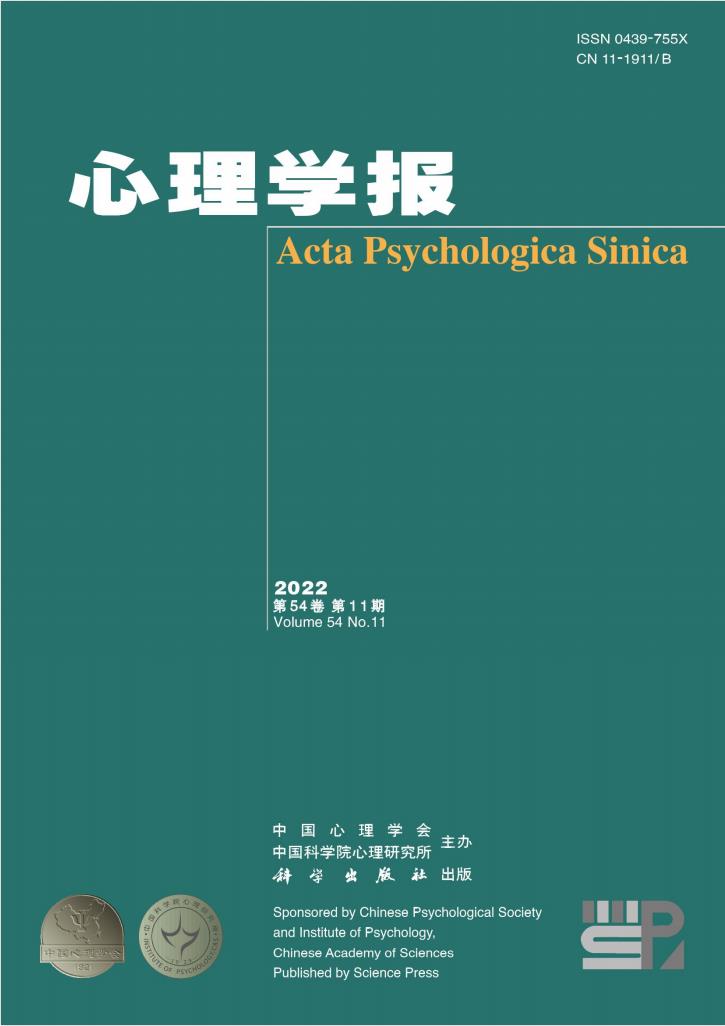藏文阅读中中央凹的词频效应及其对副中央凹预读效应的影响
IF 1.3
4区 心理学
Q3 PSYCHOLOGY, MULTIDISCIPLINARY
引用次数: 5
摘要
在阅读过程中,读者主要通过中央凹区域获取信息,其中旁中央凹在信息获取中起着重要作用。读者可以通过预习处理从旁视信息中获得一定的信息,从而促进阅读效率的提高,这就是“预习效应”。中央凹加工负荷对副中央凹预视效果的影响是近年来研究的热点。例如,基于字母语言的研究发现,对高频和短单词的预习效果比对低频和长单词的预习效果更大。虽然藏语是一种字母语言,但它也属于汉藏语系,与汉语有许多相似之处。然而,如何在藏文阅读过程中体现上述作用,在很大程度上仍不清楚。它只显示字母语言的通用字符还是显示一些中国特色?本研究旨在为这些研究问题提供实验证据。对119名藏族大学生进行了两项实验。更具体地说,参与者被要求阅读藏语句子,并使用SR Research EyeLink 1000Plus眼动仪(采样率= 1000 Hz)记录他们在阅读过程中的眼球运动。实验1通过操纵中央凹词频(即高频和低频)来研究藏文阅读中中央凹词的词频效应和词频延迟效应。结果表明,在藏语阅读中存在词频效应和词频延迟效应。实验2利用边界范式对中央凹词频和旁中央凹预览词类型进行操作,考察藏文阅读中旁中央凹的预览效果以及中央凹词频对旁中央凹预览效果的影响。结果显示,藏文阅读中旁中央凹具有预习作用,且与低频中央凹词相比,高频中央凹词对旁中央凹的预习效果有更大的促进作用。结果表明:(1)藏语阅读存在显著的词频效应,并体现在词汇加工的整个过程中;(2)藏文阅读存在显著的词频延迟效应,其贯穿于词汇加工的全过程;(3)藏文阅读中,旁视波具有显著的预习作用,读者可以通过旁视波提取语音和字体信息;(4)藏文阅读中,中央凹词频影响副中央凹预习效果的大小,而且词频只影响词汇加工早期形状预习信息的提取,即在形状预习条件下高频词的预习效果更大。综上所述,中央窝加工负荷对副中央窝预习效果的影响显示了藏文阅读中字母语言的共同特征。此外,本研究发现,阅读藏文涉及词频延迟效应和旁视预览效应;这些发现支持了E-Z阅读器模型的副中央序列处理理论。本文章由计算机程序翻译,如有差异,请以英文原文为准。
The word frequency effect of fovea and its effect on the preview effect of parafovea in Tibetan reading
In the process of reading, readers mainly obtain information through the fovea region—in particular, the parafovea plays an important role in information acquisition. Readers can obtain certain information from the parafovea through previewing processing, thus promoting the improvement of reading efficiency, which is called the “previewing effect”. The effect of the processing load of the fovea on the previewing effect of parafovea has become a popular research focus of late. For example, studies based on alphabetic languages have found that the previewing effect of the parafovea is greater for high-frequency and short words than for low-frequency and the long words. While Tibetan is an analphabetic language, it also belongs to the Sino-Tibetan language family and has many similarities with Chinese. However, it is still largely unclear how to reflect the above role in the process of Tibetan reading. Will it only show the common characters of alphabetic languages or will it show some Chinese characteristics? The present study aimed to provide experimental evidence to respond to these research questions. Two experiments were carried out on 119 Tibetan undergraduate students. More specifically, participants were asked to read Tibetan sentences and their eye movements during reading were recorded using an SR Research EyeLink 1000Plus eye tracker (sampling rate = 1000 Hz). Experiment 1 manipulated the fovea word frequency (i.e., high vs. low frequency) to investigate the word frequency effect and word frequency delay effect of fovea words in Tibetan reading. The results showed a word frequency effect and a word frequency delay effect in Tibetan reading. Experiment 2 manipulated both fovea word frequency and parafovea previewing word types with the aid of boundary paradigm to investigate the previewing effect of parafovea and the effect of fovea word frequency on the previewing effect of parafovea in Tibetan reading. The results showed a previewing effect of parafovea in Tibetan reading and that, when compared with low-frequency fovea words, high-frequency fovea words had a greater promoting effect on the previewing effect of parafovea. The primary findings can be summarized as follows: (1) significant word frequency effect exists in Tibetan reading, which is reflected in the whole process of vocabulary processing; (2) there is a significant word frequency delay effect in Tibetan reading, which runs through the whole process of vocabulary processing; (3) there is a significant previewing effect of parafovea in Tibetan reading, through which the reader can extract speech and font information; and (4) in Tibetan reading, fovea word frequency affects the size of the previewing effect of parafovea—moreover, word frequency only affects the extraction of shape previewing information in the early stage of lexical processing, that is, the previewing effect of high-frequency words is greater under the condition of shape previewing. In conclusion, the effect of the processing load of the fovea on the previewing effect of parafovea shows the common characteristics of alphabetic languages in Tibetan reading. In addition, this study found that reading Tibetan involves the word frequency delay effect and the previewing effect of parafovea; these findings support the theory of parafovea sequence processing in the E-Z reader model.
求助全文
通过发布文献求助,成功后即可免费获取论文全文。
去求助
来源期刊

心理学报
Psychology-Psychology (all)
CiteScore
1.70
自引率
13.30%
发文量
1612
期刊介绍:
Acta Psychologica Sinica (ISSN 0439-755X) is a scholarly journal sponsored by the Chinese Psychological Society and the Institute of Psychology, Chinese Academy of Sciences, and published monthly by the Science Press.
Acta Psychologica Sinica has been included in many important national and international indexing systems such as SCOPUS (Elsevier), ESCI (Web of Science), PsycINFO (APA), CSCD. It is the flagship journal of the Chinese Psychological Society that publishes peer-reviewed original empirical studies and theoretical articles spanning the entire spectrum of scientific psychology.
Acta Psychologica Sinica publishes high-quality research that investigates the fundamental mechanisms of mind and behavior and aims to deliver scientific knowledge to enhance our understanding of culture and society. It welcomes submissions of manuscripts reporting research that is up-to-date, scientifically excellent, and of broad interest and significance.
 求助内容:
求助内容: 应助结果提醒方式:
应助结果提醒方式:


